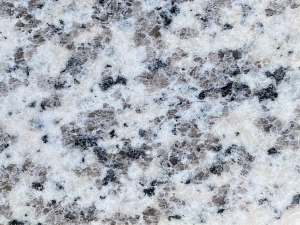Quartz countertops are designed to be durable which is why they are a popular choice for kitchens and bathrooms, but they can develop a cloudy appearance over time. Quartz countertops where cloudy spots come from and how to protect them at home with owners and professionals know more about them.
Improper Cleaning Practices
Use of Harsh Chemicals
The primary reason for cloudy marks appearing on quartz in particular is the use of harsh cleaning agents. On the other hand, although quartz is very tough, there are specific chemicals that can ruin the resin bonding the quartz particles together, leaving pockets that are not only boring yet discolored. If any product with bleach, ammonia, or a high pH product is used, this will cause a film or residue to make the spa appear cloudy. This can be easily determined by the statistics according to which 30% of cases of clouding are caused by the use of products for cleaning the car with the highest content of surfactants.
Avoid Antagonist Scrubbers
Under the naked eye, you may not be able to see these superficial scratches, but using abrasive scrubbing pads or cleaners will leave them. Because of these scratches, your countertop can appear cloudy, particularly in bright, direct light. We suggest using only soft cloths or sponges to clean quarts surfaces.
Spills and Stains
Delayed Cleanup of Spills
Spills, particularly from acidic substances like lemon juice, vinegar, or tomato sauce, will etch the surface of the countertop if not cleaned up in a timely manner, causing cloudy areas. Swift cleanup of any spills will avoid this kind of harm, which is liable for about 20percent of all instances of cloudiness on a quartz kitchen counter Whitesboro TX.
Mineral Deposits from Water
Quartz countertops are susceptible to build-up of mineral deposits from water over time — particularly around sinks and faucets in locations with hard water. Therefore, it is necessary to wipe away these deposits so they do not form a cloudy film. Consistently cleaning quartz countertops using hot water and a small volume of dish soap, concluded by a complete drying with a gentle rag, will help protect them from building up.

Problems of Manufacturing and Installation
Resin Pooling
Resin pooling is a common issue that can occur during the manufacturing process. When this occurs, you may notice resin pooling, which is a common cause where the resin bind the quartz minerals together unevenly, leading to areas that are less resistant to clouding or discoloration. Pipe failure (though less common), and can be in the slab itself from the original factory production.
Improper Installation
Quartz countertops can have stress points if not installed properly or supported adequately. Over time, this stress can lead to microfractures, or hazy regions where the material has been regularly stressed and worn down. Of course the installation can also be a place where such issues can be mitigated by having the installation done by a professional installer following proper techniques and support standards.
Maintenance and Preventative Measures
Proper Cleaning Techniques
Quartz countertops should be wiped down with a dampened washcloth (not drenched) and gentle cleaners that are suited to quartz to prevent cloudy spots. Most manufacturers of microfiber cleaning solutions developed their products to clean gently without damaging the delicate surface. Good cleaning will also help you to preserve the clarity and shine of a quartz.
TYPES OF CUTTING BOARDS/TRIVETS
Some preventative measures, such as always using cutting boards to avoid scratches or placing trivets under hot pots to prevent thermal shock, can also maintain the new look of the quartz surface.
Conclusion
Knowing why your quartz countertops are cloudy and how to properly take care of and clean them can help maintain your quarta surfaces to stay crystal clear, shiny and piping hot for years to come. For a complete guide on how to take care of your quartz please check out cloudy spots on quartz countertop.